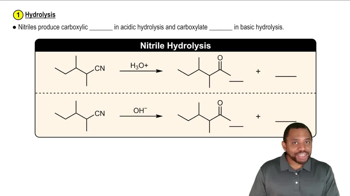Methyl p-nitrobenzoate has been found to undergo saponification faster than methyl benzoate.
(b) Would you expect methyl p-methoxybenzoate to undergo saponification faster or slower than methyl benzoate?
 Verified step by step guidance
Verified step by step guidance Verified video answer for a similar problem:
Verified video answer for a similar problem:

